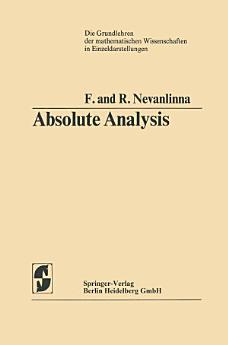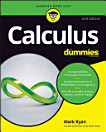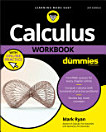Absolute Analysis
Frithjof Nevanlinna · Rolf Nevanlinna
ডিচে ২০১২ · Grundlehren der mathematischen Wissenschaften কিতাপ 102 · Springer Science & Business Media
ইবুক
272
পৃষ্ঠা
reportমূল্যাংকন আৰু পৰ্যালোচনা সত্যাপন কৰা হোৱা নাই অধিক জানক
এই ইবুকখনৰ বিষয়ে
The first edition of this book, published in German, came into being as the result of lectures which the authors held over a period of several years since 1953 at the Universities of Helsinki and Zurich. The Introduction, which follows, provides information on what moti vated our presentation of an absolute, coordinate- and dimension-free infinitesimal calculus. Little previous knowledge is presumed of the reader. It can be recom mended to students familiar with the usual structure, based on co ordinates, of the elements of analytic geometry, differential and integral calculus and of the theory of differential equations. We are indebted to H. Keller, T. Klemola, T. Nieminen, Ph. Tondeur and K. 1. Virtanen, who read our presentation in our first manuscript, for important critical remarks. The present new English edition deviates at several points from the first edition (d. Introduction). Professor I. S. Louhivaara has from the beginning to the end taken part in the production of the new edition and has advanced our work by suggestions on both content and form. For his important support we wish to express our hearty thanks. We are indebted also to W. Greub and to H. Haahti for various valuable remarks. Our manuscript for this new edition has been translated into English by Doctor P. Emig. We express to him our gratitude for his careful interest and skillful attention during this work.
এই ইবুকখনক মূল্যাংকন কৰক
আমাক আপোনাৰ মতামত জনাওক।
পঢ়াৰ নির্দেশাৱলী
স্মাৰ্টফ’ন আৰু টেবলেট
Android আৰু iPad/iPhoneৰ বাবে Google Play Books এপটো ইনষ্টল কৰক। ই স্বয়ংক্রিয়ভাৱে আপোনাৰ একাউণ্টৰ সৈতে ছিংক হয় আৰু আপুনি য'তে নাথাকক ত'তেই কোনো অডিঅ'বুক অনলাইন বা অফলাইনত শুনিবলৈ সুবিধা দিয়ে।
লেপটপ আৰু কম্পিউটাৰ
আপুনি কম্পিউটাৰৰ ৱেব ব্রাউজাৰ ব্যৱহাৰ কৰি Google Playত কিনা অডিঅ'বুকসমূহ শুনিব পাৰে।
ই-ৰীডাৰ আৰু অন্য ডিভাইচ
Kobo eReadersৰ দৰে ই-চিয়াঁহীৰ ডিভাইচসমূহত পঢ়িবলৈ, আপুনি এটা ফাইল ডাউনল’ড কৰি সেইটো আপোনাৰ ডিভাইচলৈ স্থানান্তৰণ কৰিব লাগিব। সমৰ্থিত ই-ৰিডাৰলৈ ফাইলটো কেনেকৈ স্থানান্তৰ কৰিব জানিবলৈ সহায় কেন্দ্ৰত থকা সবিশেষ নিৰ্দেশাৱলী চাওক।







